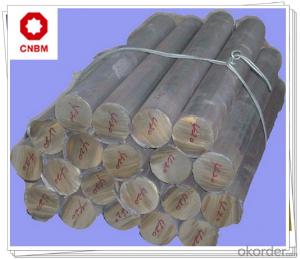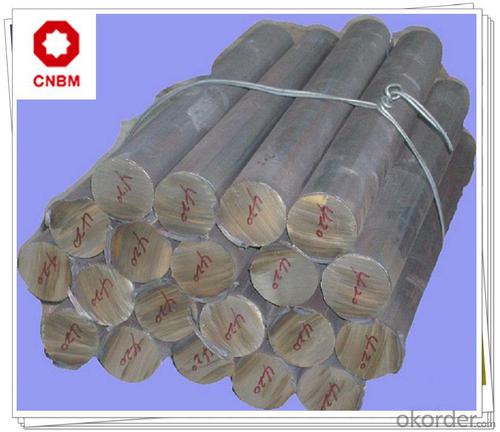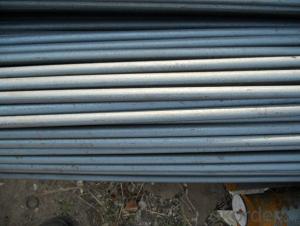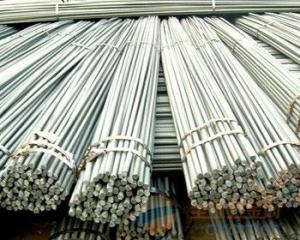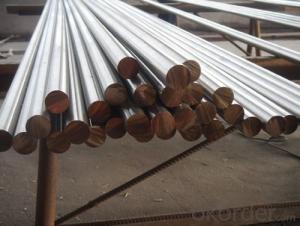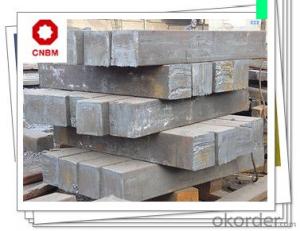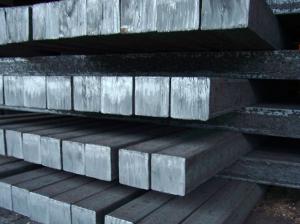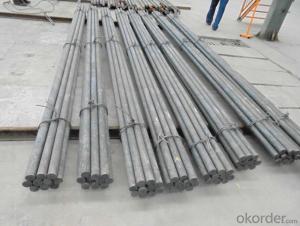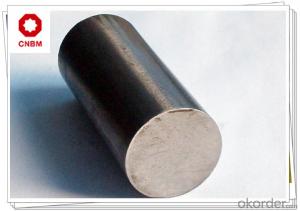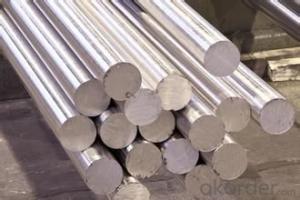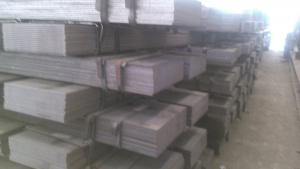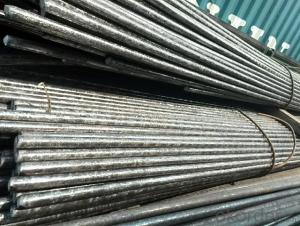Carbon Structural Steel Round Bars Q235CR
- Loading Port:
- Shanghai
- Payment Terms:
- TT OR LC
- Min Order Qty:
- 25 m.t.
- Supply Capability:
- 120000 m.t./month
OKorder Service Pledge
OKorder Financial Service
You Might Also Like
Carbon Structural Steel Round Bars Q235CR
PRODUCT SPECIFICATION
1, Chemical Composition %
| Grade | C | Si | Mn | S | P | Cr |
| Q235CR | ≤0.22 | ≤0.35 | ≤1.4 | ≤0.050 | ≤0.045 | ≥0.30 |
2, Mechanical Properties
| Strength of Extension σb | Yield Strength σs | Elogation δ5 |
| 375-500 Mpa | ≥235 Mpa | ≥25 % |
3, Diameter: 9mm - 80mm
APPLICATION
1, Widely used in construction and engineering structure.
2, Widely used in making reinforcing steel bar or building plant room rack, high voltage transmission tower, bridge, vehicle, boiler, vessel, ship, etc.
3, Widely used in manufacturing mechanical parts which are not required to be with high performance.
4, Q235CR with grade C or D can be used as steel with special use.
5, Can be used in making all kinds of mould hand and other unimportant mould parts.
6, Can be used as punch material.
PRODUCT MAIN POINTS
1, Heat Treatment: normalizing, annealing, tempering, quenching
2, Surface Treatment: black, grinding, bright, polish
3, Product Process: hot rolled, cold drawn, forged
FAQ
1, Payment Terms:
30% T/T deposit & 70% T/T before delivery.
Irrevocable L/C at sight
2, Trade Terms:
FOB, CIF, CNF
3, Delivery Time:
Normally 30-40 days. According to quantity.
4, Manufacture or Trading Company:
CNBM is a state-owned fortune global 500 trading company. We have intergrated supply system.
There are about 20 overseas locations in different countries.
PRODUCT SHOW
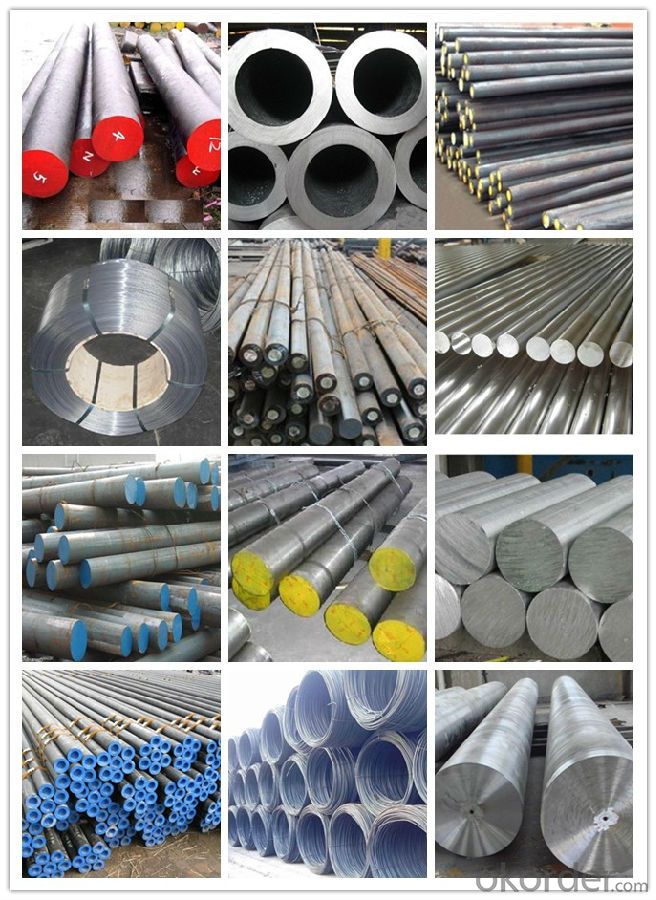
ABOUT US


- Q: What is the density of a steel round bar?
- The density of a steel round bar depends on the specific type of steel being used, as there are various steel alloys with different densities. However, on average, the density of a steel round bar is usually around 7,800 kilograms per cubic meter (kg/m³).
- Q: Can steel round bars be used in the manufacturing of tools and equipment?
- Yes, steel round bars can be used in the manufacturing of tools and equipment. Steel is a strong and durable material that can withstand heavy loads and provide stability. Round bars can be shaped, cut, and machined into various tool components such as shafts, handles, or blades, making them suitable for a wide range of applications in the manufacturing industry.
- Q: What is the difference between a smooth and a deformed steel round bar?
- A smooth steel round bar is characterized by its consistently even surface, free from any visible imperfections or deformities. It is typically produced using the hot rolling technique, which involves heating a steel billet and passing it through a series of rolling mills to achieve the desired shape and surface finish. Smooth steel round bars are commonly employed in applications where aesthetics and surface quality are of utmost importance, such as architectural designs or decorative metalwork. Contrarily, a deformed steel round bar possesses intentional deformations or patterns on its surface. These deformations can take various forms, including ridges, ribs, or indentations. The purpose of incorporating deformations on the surface of a steel round bar is to enhance its ability to bond with concrete or other materials. The irregular surface of a deformed bar provides increased friction and better adhesion, thereby improving the structural integrity of reinforced concrete structures. Deformed steel round bars find primary use in construction projects, particularly in reinforced concrete structures like columns, beams, and slabs. The deformations on the bar's surface serve to prevent slippage between the steel and concrete, ensuring a stronger bond and enhancing the overall stability and durability of the structure. To summarize, the key distinction between a smooth and a deformed steel round bar lies in their surface characteristics and intended applications. Smooth bars possess a uniform and smooth surface, making them suitable for applications that prioritize aesthetics and surface quality. Deformed bars, on the other hand, possess intentional deformations to enhance bonding with concrete, making them well-suited for construction projects that require reinforced concrete structures.
- Q: What is the maximum temperature steel round bars can withstand?
- The maximum temperature that steel round bars can withstand depends on the specific grade and composition of the steel. However, most standard carbon steels can typically withstand temperatures up to approximately 1000°C (1832°F) before their mechanical properties begin to significantly degrade.
- Q: How are steel round bars used in the construction of airports and runways?
- Steel round bars are commonly used in the construction of airports and runways due to their strength, durability, and versatility. These bars are primarily used in the reinforcement of concrete structures, ensuring that the airport infrastructure can withstand heavy loads and extreme weather conditions. In the construction of airport runways, steel round bars are commonly used to reinforce the concrete pavement. The bars are placed within the concrete during construction, providing additional tensile strength to the runway. This reinforcement helps to prevent cracking and crumbling under the weight of aircraft, ensuring a safe and reliable surface for landing and takeoff. Additionally, steel round bars are used in the construction of airport terminals and other buildings within the airport complex. They are often utilized in the framework of the structures, providing support and stability. The bars are commonly used in the construction of columns, beams, and foundations, ensuring the overall structural integrity of the buildings. Furthermore, steel round bars are employed in the construction of ancillary facilities such as hangars, control towers, and fuel storage facilities. These bars are used to reinforce the concrete foundations and walls, providing additional strength and stability to these critical structures. In summary, steel round bars are essential components in the construction of airports and runways. Their use reinforces concrete structures, providing the necessary strength and durability to withstand heavy loads and harsh environmental conditions. From runways to terminals and ancillary facilities, steel round bars play a crucial role in ensuring the safety and reliability of airport infrastructure.
- Q: What is the maximum load capacity of a steel round bar?
- The maximum load capacity of a steel round bar depends on various factors, including the diameter, length, and grade of the steel. Steel round bars are designed to withstand different levels of stress and can have varying load capacities. Generally, the load capacity is determined by the yield strength and ultimate tensile strength of the steel. To determine the maximum load capacity of a specific steel round bar, it is necessary to consult engineering specifications or reference materials provided by the manufacturer. These specifications will provide the necessary information to calculate the load capacity based on the specific dimensions and properties of the round bar. It is important to note that load capacity calculations should be carried out by qualified professionals with a thorough understanding of structural engineering principles and material properties.
- Q: Are steel round bars suitable for the production of hydraulic cylinders?
- Yes, steel round bars are suitable for the production of hydraulic cylinders. Steel round bars provide excellent strength, durability, and resistance to wear and tear, making them a reliable choice for hydraulic cylinder production. Additionally, their versatility allows for customization and various configurations to meet specific hydraulic system requirements.
- Q: How are steel round bars used in the manufacturing of conveyor systems?
- Due to their durability and strength, steel round bars are commonly utilized in the manufacturing of conveyor systems. These bars serve as integral components for conveyor belts, rollers, and pulleys. In the realm of conveyor systems, it is customary to employ steel round bars in the construction of the framework or support structure. These bars form the main body of the conveyor, ensuring stability and strength to withstand the weight and movement of transported materials. To illustrate, steel round bars are frequently utilized in the creation of the support structure for conveyor belts. These bars are typically bent or welded into circular shapes, forming the rollers or idlers that provide support for the conveyor belt. The bars are evenly spaced along the conveyor's length, establishing a stable platform for the belt's movement. Moreover, steel round bars are also employed in the fabrication of the pulleys that drive the conveyor belt. These pulleys are usually fashioned from a solid steel round bar, which is machined to the desired size and shape. Once mounted on the conveyor system, the pulleys are connected to a motor or other power source, enabling them to rotate and move the conveyor belt. In essence, steel round bars assume a vital role in the manufacturing of conveyor systems by furnishing the necessary strength and stability for efficient material handling. Their durability and resistance to wear and tear make them an ideal choice for the demanding conditions found in conveyor applications.
- Q: What is the difference between hot rolled and cold rolled steel round bars?
- The production methods and resulting qualities of hot rolled and cold rolled steel round bars differ. Hot rolled steel round bars are created by heating billets or ingots to a high temperature and shaping them into the desired form using rolling mills. This process yields a scaled surface and a relatively rough texture. The dimensions of hot rolled steel round bars have a wider tolerance and are less precise. They are commonly used in applications where precision is not crucial, such as construction and general manufacturing. In contrast, cold rolled steel round bars are produced by cooling down hot rolled steel to room temperature and subjecting it to further processing through cold rolling mills. This process leads to a smoother surface and more accurate dimensions. Cold rolled steel round bars have a tighter tolerance and are frequently employed in applications that require precision, like automotive components, machinery parts, and tools. Regarding mechanical properties, hot rolled steel round bars generally possess lower tensile strength and yield strength compared to cold rolled steel round bars. Cold rolled steel also tends to have higher hardness and a more uniform grain structure, which can enhance its strength and durability. In summary, the primary distinction between hot rolled and cold rolled steel round bars lies in their production process, surface finish, dimensional accuracy, and mechanical properties. The selection between the two depends on the specific requirements of the application and the desired qualities of the final product.
- Q: Can steel round bars be used in the medical industry?
- Yes, steel round bars can be used in the medical industry. Stainless steel round bars, in particular, are commonly used in medical applications due to their corrosion resistance, strength, and durability. These bars can be used in the production of various medical devices and equipment, including surgical instruments, orthopedic implants, dental tools, and prosthetics. The high-quality stainless steel ensures that these products can withstand the demanding conditions of medical environments and provide optimal performance and safety to patients. Additionally, stainless steel round bars can be easily sterilized, making them suitable for use in sterile medical settings.
Send your message to us
Carbon Structural Steel Round Bars Q235CR
- Loading Port:
- Shanghai
- Payment Terms:
- TT OR LC
- Min Order Qty:
- 25 m.t.
- Supply Capability:
- 120000 m.t./month
OKorder Service Pledge
OKorder Financial Service
Similar products
Hot products
Hot Searches
Related keywords
